FULL AUTOMATION(Intelligent Mobility)
cooperative autonomous driving Self-driving service platform technology
based on AI and sensor fusion Artificial intelligence lidar sensor technology for
autonomous driving PIM(Processor-In-Memory)
AI Semiconductor Technology 5G beamforming technology for
autonomous driving Self-driving robot technology in
large indoor and outdoor spaces
- Self-driving solution
- A system in which moving objects such as automobiles and PAVs autonomously move to their destination by recognizing the surrounding environment, judging the situation, and controlling functions without driver or passenger intervention.
- Technical overview
-
Platform technology that enhances autonomous driving safety by extending the cognitive range of autonomous vehicles and providing connectivity through various types of vehicle communication
Hybrid V2X communication hardware platform design technology Hybrid communication : DSRC(WAVE) 2ch, LTE-V2X 1ch, LTE/5G 1ch Specification : IEEE 802.11p, 3GPP Rel.14~15
Hybrid V2X communication software technology Hybrid communication : DSRC(WAVE), LTE-V2X Specification : IEEE 1609+SAE J2945/1(KO,US), ETSI GeoNetworking (EU)
Securing commercialization level technology perfection Application of many C-ITS pilot projects in Korea Application of domestic and overseas V2X communication certified test equipment solution
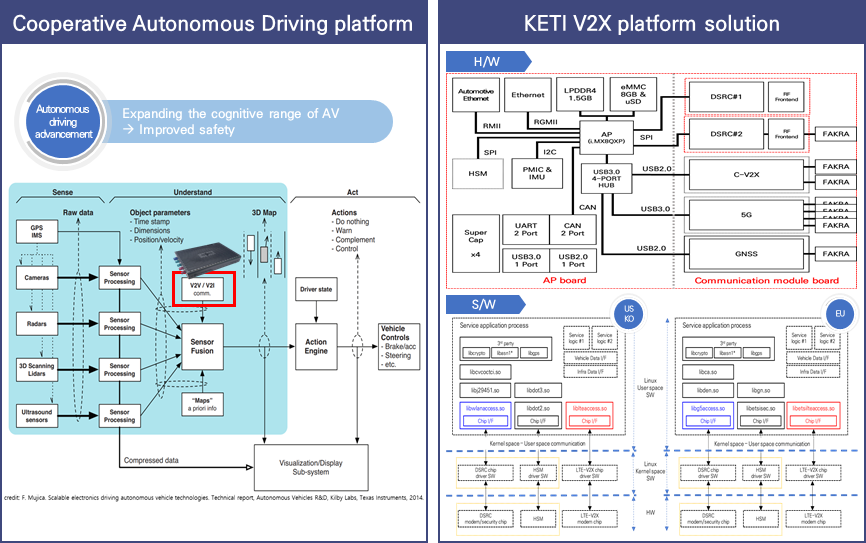
- Necessity and importance
-
(Market) The global V2X market size is expected to grow at a CAGR of 44.2% from $690 million in 2020 to $12.56 billion in '28 (Source : Markets and Markets)
(Policy) Intensive support for Innovative Growth BIG3 Industry Intensive Promotion Plan(‘20), Digital New Deal Action Plan(’21), etc.
- Applications
-
< V2X communication platform application field >
Areas Description Mobility C-ITS, Platooning, Connected car
Autonomous vehicle Cooperative autonomous driving, OTA update
- Technical overview
-
Self-driving solution Through sensor fusion-based AI learning that combines sensors such as cameras, Lidar and Radar in vehicles with high-speed V2X communication, self-driving service platform technology that provides safety and convenience for self-driving cars in a mixed situation of general vehicles and self-driving cars
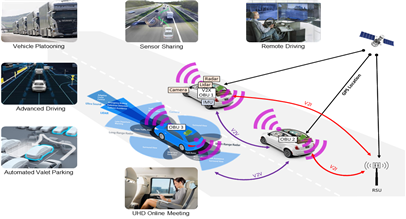
- Necessity and importance
-
(Markets) The global self-driving car market is expected to grow 41% annually from $7.1 billion in 2020 to $1.12 trillion in 2035 (Source: SPRi, KPMG) The size of the domestic market is expected to grow 40% annually from 150.9 billion won in 2020 to 26.1794 trillion won in 2035 (Source: SPRi, KPMG)
(Policies) Focusing on connected-based self-cooperative driving such as 2030 Future Car Industry Development Promotion Strategy ('19), 5G+ Strategy ('20), and Self-driving Technology Development Innovation Project ('21~27)
- Applications
-
< AI and sensor fusion-based autonomous driving service platform technology application field >
Areas Description Mobility Cognition, judgment, and control-based remote control, cluster driving, autonomous valet parking, etc
Various autonomous driving services such as autonomous route control
Military Unmanned driving to the destination and hitting it with precision
Industrial process Autonomization of product production processes such as smart factories
Automation of logistics between industrial complexes and factories
- Technical overview
-
Light Detection And Ranging (LiDAR) is a technology that detects characteristics such as distance, direction, speed, temperature, material distribution and concentration to an object by irradiating a laser on a target object It is used as a core sensor technology for the 4th industrial revolution such as self-driving cars, intelligent robots, drones, smart manufacturing, and AR/VR
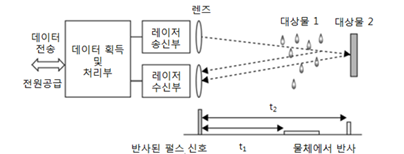
- Necessity and importance
-
(Markets) The global lidar market is expected to grow 20.5% annually from $1.1 billion in 2020 to $2.8 billion in 2025 (Source: Markets and Markets)
(Policies) Focused support for related industries by selecting smart car development, self-driving car industry development as one of the top 100 tasks in state administration, and establishing future automobile industry development strategies ('19)
- Applications
-
< Artificial intelligence lidar sensor technology application field >
Areas Description Car Self-driving car, automatic parking system
Drone Spatial information acquisition, safe operation
Logistics Autonomous logistics delivery, logistics inspection
Military Acquire information, unmanned military robot
Security Subway screen door, broadband security, large door safety
- Technical Overview
-
A PIM semiconductor model is a new design technology that innovates the conventional Von Neumann Architecture, which has reached the performance limits, by merging computational processor and memory
The PIM semiconductors can maximize the memory access performance and data processing performance of the processor, which can simultaneously achieve ultra high performance and ultra low power.
Conventional Semiconductors PIM Concept 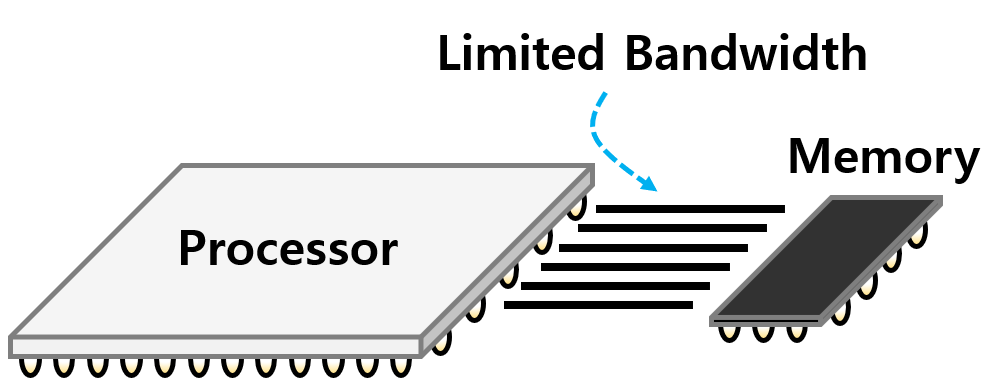
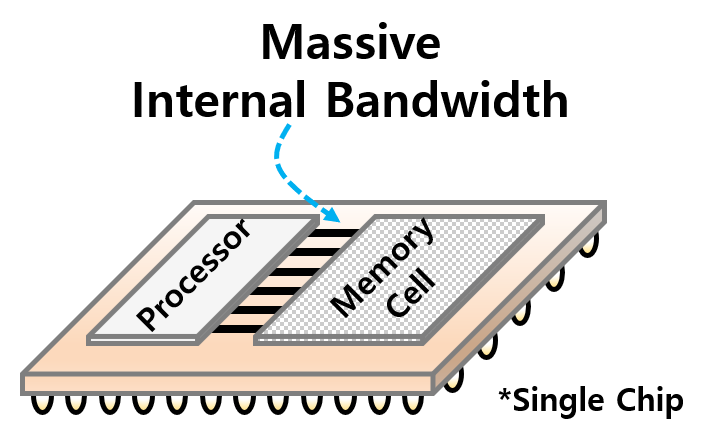
Feature The processor's performance is high, but limited memory bandwidth is a bottleneck.
Utilizes high internal bandwidth to supply massive data for ultra-fast operation.
Performance
ImprovementFocusing on improving the performance of the processor itself.
Focusing on supplying large amount of data.
- Necessity and importance
-
(Market) The global AI semiconductor market is expected to grow by an average of 26.5% annually from about $7 billion in 2018 to about $117.9 billion in 2030, as demand surges. (Source: Gartner)
(Government Policy) System Semiconductor Vision and Strategy (’19), AI Semiconductor Industry Development Strategy(‘20), and Intensive fostering through major preliminary project
- Application
-
< PIM AI Semiconductor Application field >
Areas Description AI Chip Biotechnology, medicine, healthcare, autonomous vehicles, smart appliances, manufacturing, Agriculture, robots, IoT, smart city, energy, etc.
- Technical overview
-
Beam Forming and Beam Tracking are integrated circuits in 16 arrays that satisfy Multi-User Multiple Input Output (MU-MIMO), a 5G standard in the 28/38 GHz band high frequency to reduce signal loss and increase radiation performance applied not only to small base stations and repeaters, but also to small IoT systems using 5G frequencies and intelligent APs in buildings Utilized in the development of general-purpose device technology that can provide high-quality network environments to smart devices and high-resolution media devices
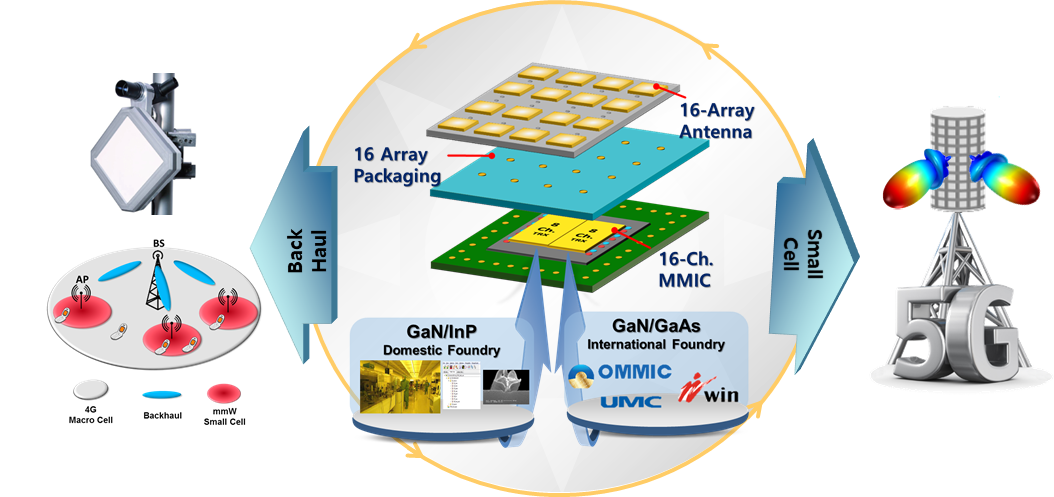
- Necessity and importance
-
(Markets) The global market size of RF devices for telecommunication is expected to grow from $17.5 billion in 2019 to $22.5 billion in 2023. (Source: Microwave and RF)
(Policies) In April 2019, 5G was commercialized for the first time in the world, and '5G+ Strategy' was established and investment plans and progress of more than 30 trillion won are underway
- Application
-
< 5G beamforming technology application field >
Areas Description Communication Antenna system for a 5G base station and an antenna system for a terminal
Ku/Ka band artificial satellite communication parts
Military mmWave Civil/Military Radar Weapon System
- Technical overview
-
Cloud-based robot spatial intelligence technology that overcomes the limited resources of mobile robots such as last mile delivery robots, drones, and mobile manipulators and shares semantic maps in two directions so that services can be provided even in large spaces (city, county, and district) environments
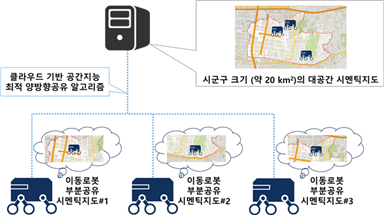
- Necessity and importance
-
(Markets) The global last mile delivery robot market is expected to grow 49% annually from $350,000 in 20 years to $3.82 million in 26 years (Source: Mordor Intelligence) Korea has optimal conditions to revitalize the robot delivery market, including 3.37 billion cases of annual delivery ('20) and 17.4 trillion won in delivery food market size (Source: Korea Integrated Logistics Association, Statistics Korea)
(Policies) Consistent with government policies to expand robot services such as the robot industry development plan ('19) and the 3rd Basic Plan for Intelligent Robots ('19)
- Applications
-
< Autonomous mobile robot, indoor and outdoor large space technology applications field >
Areas Description Mobile robot Service Application to robotic services that utilize mobile robots such as Last Mile Shipping Robot, Drone, and Mobile Manipulator
Mobile Platform Application to mobile platforms that share space with humans, such as robots, electric wheelchairs, and boarding means, away from lanes on the road
Copyright(C) 2016 KOREA ELECTRONICS TECHNOLOGY INSTITUTE., All Rights Reserved.


